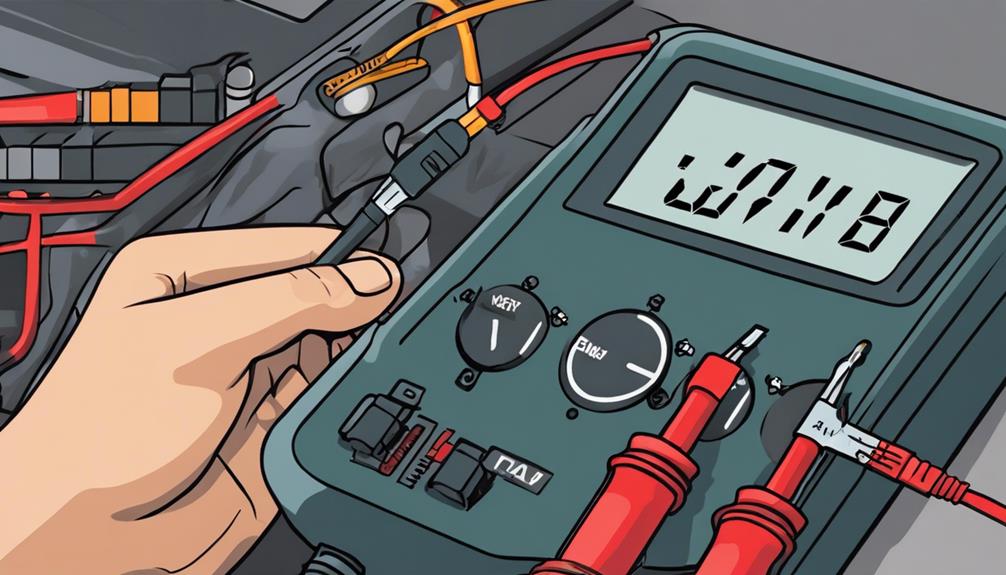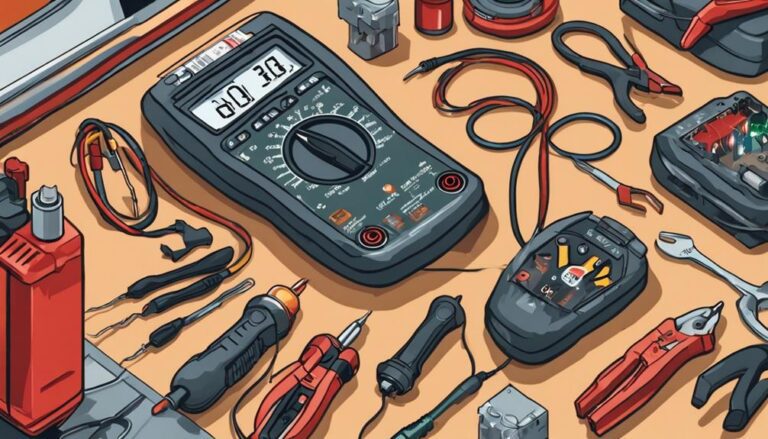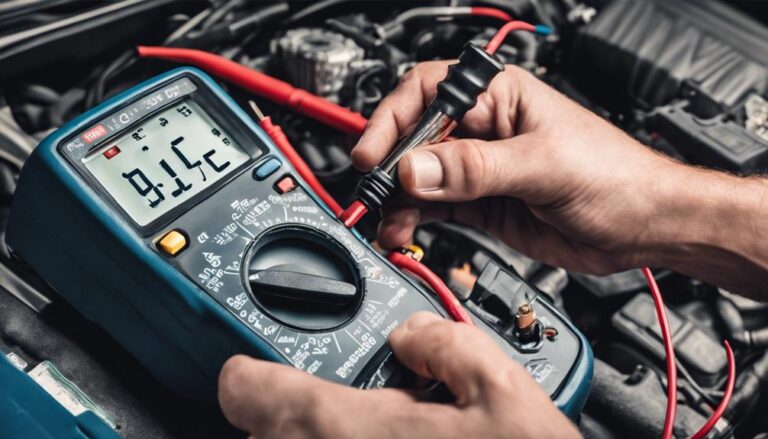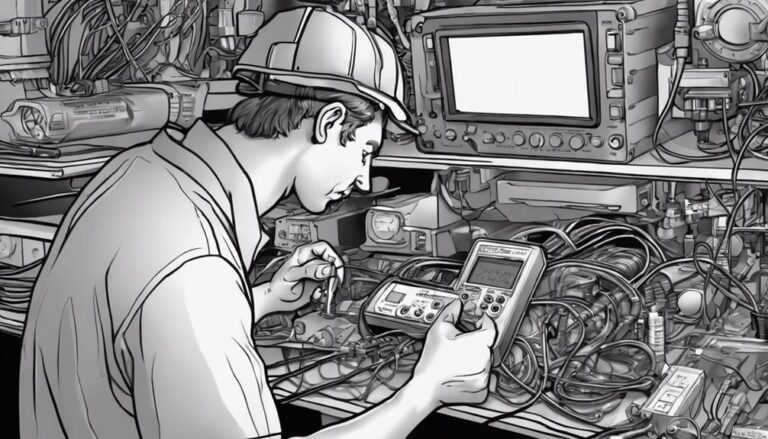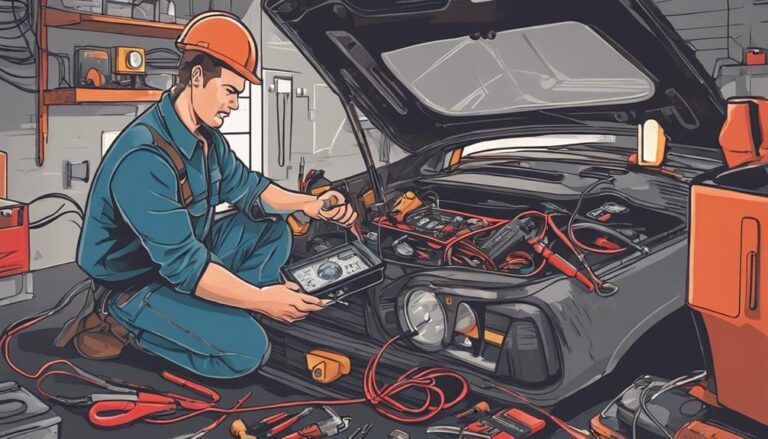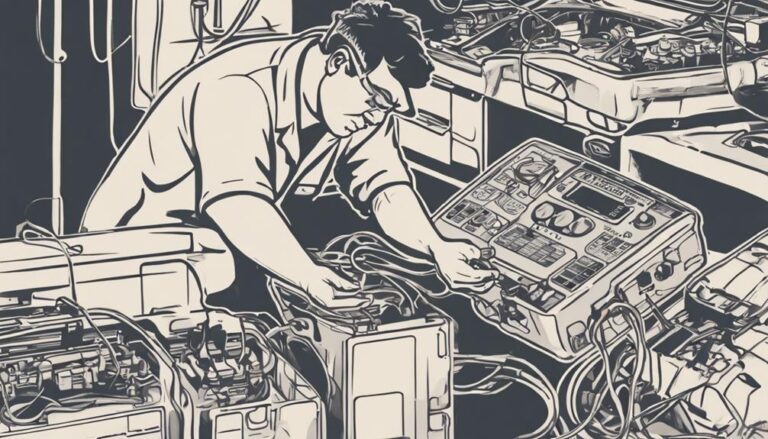5 Practical Steps to Identify Car Electrical Issues
When it comes to your car's electrical system, the saying goes, 'An ounce of prevention is worth a pound of cure.'
You're driving along, and suddenly, a mysterious electrical issue arises. What now?
Well, by following five straightforward steps, you can troubleshoot and identify car electrical problems with ease.
So, let's unravel the mystery together and get you back on the road hassle-free.
Key Takeaways
- Regularly check for dimming lights or malfunctioning accessories to detect potential electrical issues early.
- Use a multimeter to test voltage and identify wiring or connection problems efficiently.
- Inspect specific components like lights, power windows, and audio system for proper functioning.
- Conduct visual inspections to ensure secure connections, check for corrosion, and examine wiring for damage.
Importance of Electrical System in Cars
Understanding the critical role of the electrical system in cars is paramount for maintaining vehicle safety and performance. The safety importance of a well-functioning electrical system can't be overstated. Safety features such as airbags and ABS rely heavily on a healthy electrical system to operate effectively. Regular maintenance is key to ensuring these safety components are functioning optimally.
To uphold safety standards, it's crucial to follow maintenance tips that include checking for dimming or flickering lights, which may indicate issues with the alternator or a weak battery. Additionally, keeping an eye out for malfunctioning accessories like power windows or radio can signal potential electrical problems that need prompt attention.
Common Symptoms of Electrical Issues
Identifying common symptoms of electrical issues in your car can help you pinpoint potential problems early on for timely repairs and maintenance.
Voltage fluctuations are a common sign of electrical issues, often indicating problems with the alternator or battery. Dimming or flickering lights may point to these issues.
Additionally, malfunctioning accessories such as power windows or the radio can signal underlying wiring problems.
Keep an eye out for frequent battery issues, as they could be a red flag for potential alternator failure.
If you notice strange smells or smoke coming from your car, it suggests severe electrical problems that require immediate attention.
Blown fuses are another indicator of potential wiring problems, short circuits, or overloaded circuits.
Visual Inspection Techniques

During your visual inspection of car electrical components, prioritize checking the battery terminals and cables for corrosion or loose connections to ensure optimal electrical contact. Corrosion on the terminals can hinder the flow of electricity, leading to potential starting issues.
Inspect the wiring connections leading to the alternator and starter for any visible damage or loose fittings that could impact their performance. Additionally, examine the fuse box for melted fuses or loose connections, as these could be indicators of underlying electrical problems.
Look closely for any signs of wear or damage on wires and connectors as part of your corrosion detection efforts. Ensure all components are securely connected and free from debris to maintain proper functionality.
Using Multimeter for Testing
Utilize a multimeter to measure voltage, current, and resistance in car electrical systems efficiently. When conducting voltage testing, set the multimeter to the appropriate range, typically DC voltage for car systems.
To test battery voltage, connect the multimeter's probes to the battery terminals. A voltage reading below 12.6 volts may indicate a charging system problem or a weak battery.
For alternator output voltage testing, connect the multimeter to the battery terminals while the engine is running. The voltage should fall within the manufacturer's specified range.
Additionally, multimeters can help identify wiring or connection issues by verifying voltage drop in circuits. This aids in pinpointing areas where resistance is disrupting the flow of electricity.
Diagnosing Specific Electrical Components
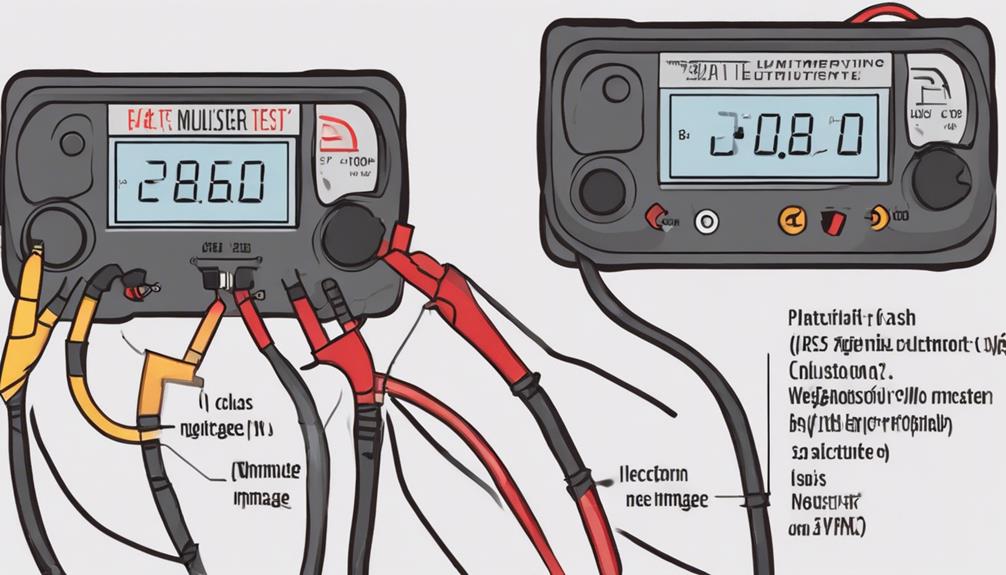
When diagnosing specific electrical components in your car, start by testing lights and bulbs individually to ensure proper functioning and brightness levels. Check for any dimness or flickering, which could indicate voltage drop issues.
Next, inspect power windows and locks for smooth operation. If you encounter any sluggishness, it may point towards grounding issues affecting the components.
Evaluate the audio system by testing speakers and the head unit for clear sound output. Distorted or weak sound can be a sign of grounding problems impacting audio quality.
Additionally, troubleshoot the ignition system components like spark plugs and ignition coils for any starting issues. Ensure that these parts receive adequate power without any voltage drop that could hinder the starting process.
Lastly, examine specific electrical components such as sensors and relays for proper operation and connectivity. Addressing any grounding issues promptly can prevent electrical malfunctions and ensure optimal performance of your car's electrical system.
Frequently Asked Questions
How Do You Trace Electrical Problems in a Car?
To trace electrical problems in a car, start by checking for voltage drop using a multimeter. Inspect wiring harnesses and fuse boxes for issues. Follow the wiring from the component to the power source. Address grounding problems for a reliable fix.
How Do I Find Out What Electrical Problems My Car Has?
To find out what electrical problems your car has, start with voltage drop testing and inspecting the wiring. Use a multimeter to check for issues and examine fuses for potential problems. These steps can help diagnose and fix electrical faults efficiently.
How Long Does It Take to Diagnose an Electrical Problem in a Car?
You think diagnosing car electrical problems is a quick fix. In reality, it varies from minutes to hours, depending on complexity. DIY methods can help, but pro help with diagnostic tools ensures precise identification, reducing guesswork.
How Do You Troubleshoot Electrical Problems?
To troubleshoot electrical problems effectively, start with voltage testing to pinpoint issues. Proceed with thorough wiring inspection to identify faults. By following these steps methodically, you can liberate yourself from the frustration of car electrical issues efficiently.
Conclusion
In conclusion, when it comes to identifying car electrical issues, remember that the devil is in the details. By following the five practical steps outlined, you can efficiently diagnose and address any issues that may arise.
Remember, a stitch in time saves nine, so don't delay in addressing electrical problems to prevent larger issues down the road. Stay vigilant, stay proactive, and keep your car running smoothly.

